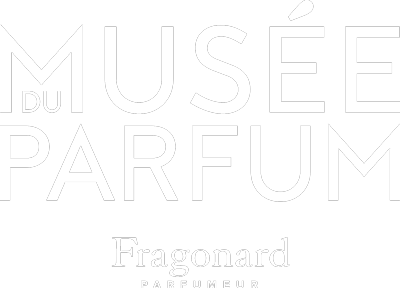COLLECTIONS
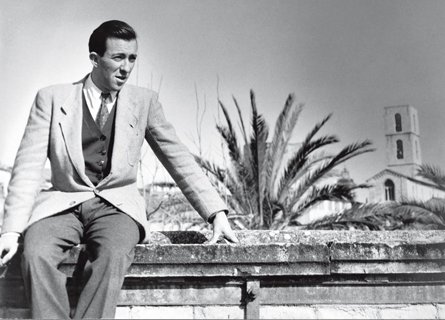
Thanks to his uncle, who shared his knowledge of the history of art with him from an early age, Jean-François Costa, father of the current directors, was impassioned by objets d’art throughout his life. His museum tours and discussions with experts, curators, historians and simple art lovers, forged his taste for antiques and, in particular, for the French 18th century.
A pioneer in his field, Jean-François Costa began collecting perfumery objets d’art in the Fifties, before perfume met with its current popularity. His collection, which started out as a professional interest, soon became unique. It features distillation equipment and objets d’art dating from Antiquity to the mid-20th century and is the only one of its kind in the world in terms of quality, quantity and variety.
Trained by their father – and just as passionate about perfume – Agnès and Françoise continue to perpetuate his work and enrich the museum collections regularly with new acquisitions.
MUST-SEE OBJECTS
Discover the history of perfume through six must-see objects on show at the museum.
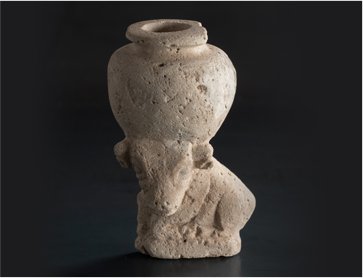
Kohl vase
Mesopotamia, Early Dynastic Period, circa 3000 BC, chalk
Kohl vase
One of the oldest items in the collection, this Mesopotamian kohl vase represents a bovine. An exceptional object, it stands witness to an era when perfume was not only used for religious regions, but also as a beauty product.
Mesopotamia, Early Dynastic Period, circa 3000 BC, chalk
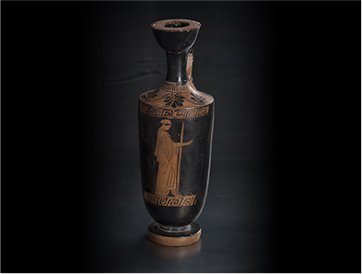
Greek ceramic vase
Greece, circa 470 BC, orange clay and black slip
Greek ceramic vase
Red Lekythos representing a woman draped in a long chiton. She is framed by a decorative meandros. The base of the neck is decorated with palm leaves.
Greece, circa 470 BC, orange clay and black slip
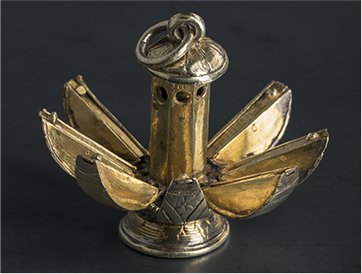
Pomander
Late 16th century, silver-gilt
Pomander
Worn on the belt, as a pendant, or carried in the hand, pomanders or smelling boxes were used to repel disease and epidemics, widespread in the Middle Ages. Used in solid form, the perfume was placed in the various compartments of this silver-gilt pomander, made in the late 16th century.
Late 16th century, silver-gilt
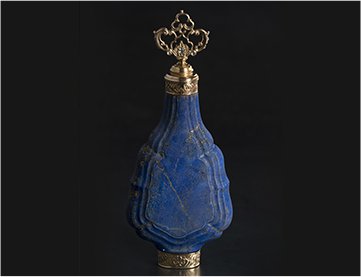
Jewel bottle
Germany, circa 1700, lapis lazuli, gold and diamonds
Jewel bottle
Manufacturers became more widespread during the Renaissance period, and the perfume bottle became a genuine item of jewelry, crafted with various rare materials and gems. Made of lapis lazuli, this bottle is decorated with gold interlacing and adorned with diamonds. Germany, circa 1700.
Germany, circa 1700, lapis lazuli, gold and diamonds
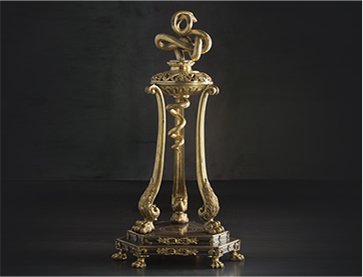
Louis XIV perfume burner
France, second half of 17th century, gilded bronze and ebony
Louis XIV perfume burner
Under Louis XIV’s reign, the aristocracy and bourgeoisie raved about perfume products in every shape and form. Artists put their talent into creating outstanding objects such as this astonishing perfume burner made of gilded bronze and ebony and adorned with scrolls, crossed by the twisted body of a snake.
France, second half of 17th century, gilded bronze and ebony
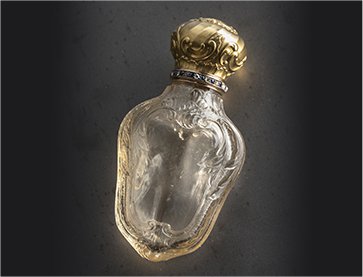
Fabergé bottle
Saint-Petersburg, 1899-1901, smoked quartz, gold, diamonds and sapphires
Fabergé bottle
Perfume bottle created by the Russian jeweler Karl Fabergé, famed for his Easter eggs set with precious gems, commissioned by the Tsar for his wife. This bottle is made of smoked quartz mounted with gold and adorned with diamonds and sapphires.
Saint-Petersburg, 1899-1901, smoked quartz, gold, diamonds and sapphires
UNUSUAL BOTTLES
Astonishing and unusual, perfume bottles are found in every shape and form through the ages.
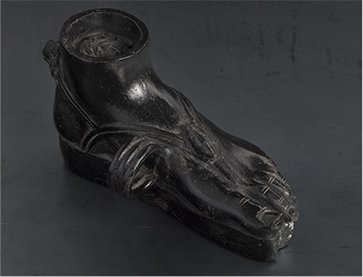
Askos-Guttus
Arg el Ghazouani necropolis (Kerkouane), late 4-early 3 BC, black varnished terracotta
Askos-Guttus
Guttus of Alexandrian origin in the shape of a foot wearing a gladiator sandal, with a filtering strainer. It features an orifice decorated with a lion’s head above the heel, pierced with 5 filling holes at the ankle set around the molded figure of a man’s head.
Arg el Ghazouani necropolis (Kerkouane), late 4-early 3 BC, black varnished terracotta
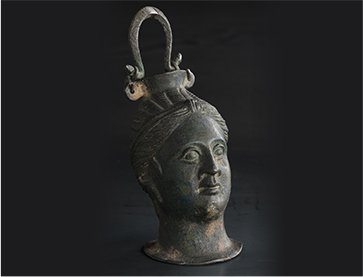
Bronze perfume vase
Central Italy, Etruscan workshops, Hellenistic period, 3-2 BC, bronze
Bronze perfume vase
This vase was probably used as a recipient for funeral unguent, as indicated by the inscription engraved on its front. The shape appears to be inspired by Hellenistic Greek prototypes but it is of typical Etruscan fabrication. It was made in 3 BC, probably at the workshops of Orvieto or Vulci, then famed for their bronzes, in bronze with a dark green patina.
Central Italy, Etruscan workshops, Hellenistic period, 3-2 BC, bronze
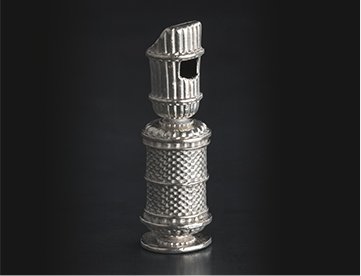
Whistle pomander
Germany, 8th century, silver
Whistle pomander
Baluster-shaped whistle pomander in silver guilloche.
Germany, 8th century, silver
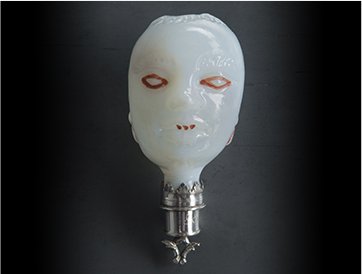
Head-shaped bottle
France, late 17th/early 18th century
Head-shaped bottle
Bottle in the shape of a Roman man’s head in milky opal glass embellished with red for the eyes, ears and teeth. Attributed to the Bernard Perrot factory (Orléans), it may also be the work of the Nevers factory or Saint-Quirin glass factory.
France, late 17th/early 18th century
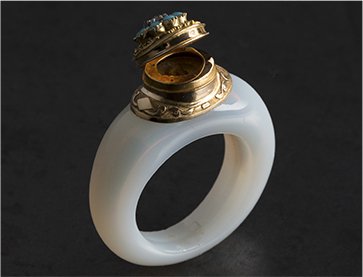
Ring flask
Czech Republic, 19th century
Ring flask
Ring flask in opaque white glass (opal) featuring a mount forming a repoussé and chiseled gold cabochon on a guilloché base adorned with turquoise and a central, rose-cut diamond. The upper part of the cabochon comprises a hinged cap, through which the perfume was poured. Attributed to the workshop of F. Egermann.
Czech Republic, 19th century
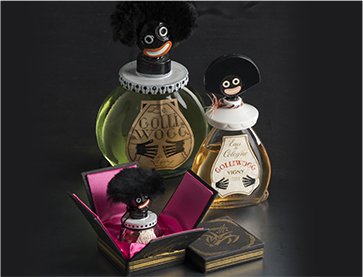
Golliwog
France, 1918
Golliwog
Presented in a cubic carboard case sheathed in black paper with a golden motif and fuchsia satin interior, this African-style bottle is made of clear glass adorned with black and white enamel. It portrays the first colored person featured in American comic books written by the Upton sisters. His fur-topped head acts as a stopper. Designed by Michel De Brunhoff.
France, 1918
COUTURE BOTTLES
The profession was revolutionized in the 20th century by a trio comprising a perfumer, a glassmaker and a fashion designer.
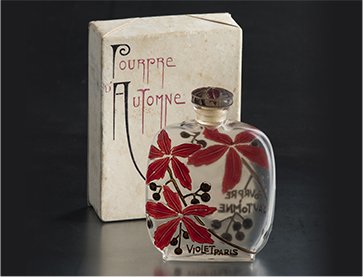
Violet Bottle
France, 1923
Violet Bottle
Bottle of Pourpre d’Automne perfume by Violet, from 1923. It is presented in its rare, rectangular cubic case sheathed in paper and titled in red and black. The bottle is clear glass, the body an inrô shape. Each decorated side is molded and lacquered with red and black fruit and chestnut leaves. It features a carnette neck and cabochon stopper with the same lacquered decoration.
The case and bottle were designed by Lucien Gaillard.
France, 1923
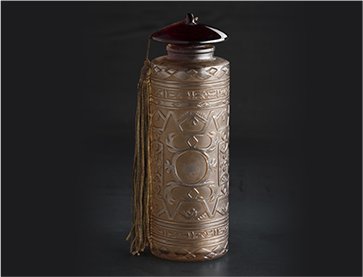
Rosine Bottle by Paul Poiret
France, 1925
Rosine Bottle by Paul Poiret
Rare, pressed and molded clear glass cylindrical bottle in the shape of a roller, molded with Chinese bistre patina motifs, with a disc-shaped convex stopper in ruby red tinted glass adorned with lace. Designed for the International Decorative Arts Exhibition in Paris.
France, 1925
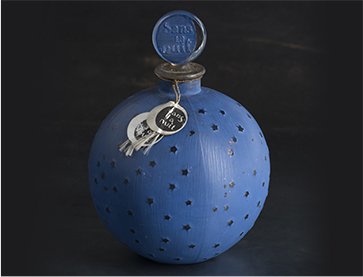
Worth Bottle
France, 1925
Worth Bottle
Blue, ball-shaped glass bottle dotted with stars. Designed by René Lalique for the perfume by the haute couture house Worth.
France, 1925
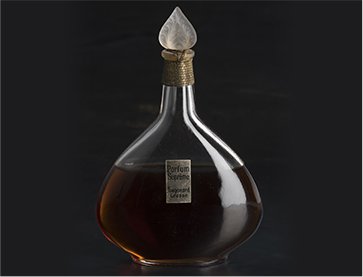
Fragonard Bottle
France, 1930s
Fragonard Bottle
Bottle designed by the famous early 20th-century master glassmaker René Lalique for Fragonard’s Suprême perfume.
France, 1930s

Relief Bottle by Forvil
France, 1930s
Relief Bottle by Forvil
Designed by René Lalique for Maison Forvil, the Relief bottle is a large, pressed and molded clear glass bottle of cylindrical oval shape. The body is in the shape of a rounded, convex disc, with a molded pearly arabesque decoration in relief. The carnette neck and cabochon stopper are similarly decorated. Numbered and signed model.
France, 1930s
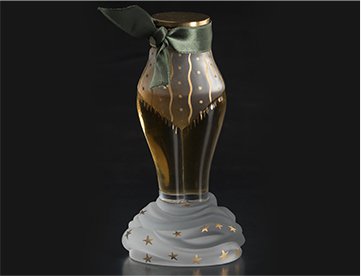
Zut Bottle by Elsa Schiaparelli
Paris, 1937
Zut Bottle by Elsa Schiaparelli
Partially frosted glass bottle with a golden and tin decoration.
Paris, 1937
